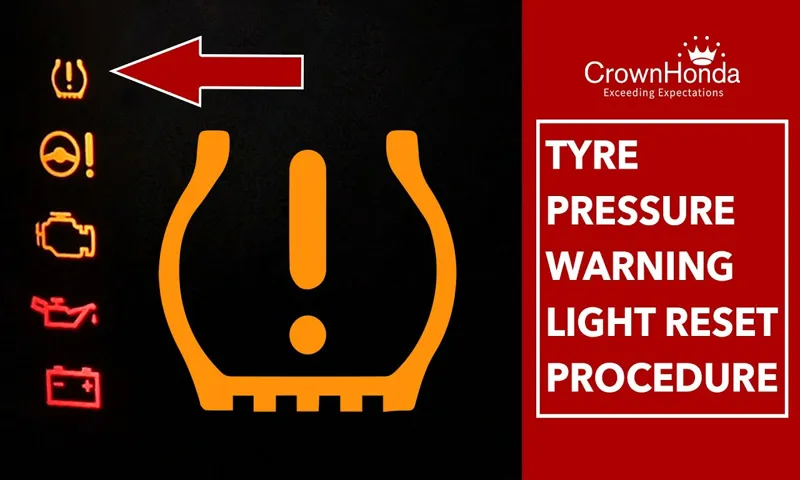Have you ever felt annoyed by that little warning light on your Honda dashboard that just won’t go away? You know, the one that tells you your tire pressure is low even though you’ve already inflated them to the recommended level? Don’t worry, you’re not alone. This common issue can be caused by a variety of factors, like temperature changes or a malfunctioning sensor, but it doesn’t have to be a hassle. In this step-by-step guide, we’ll show you how to turn off your Honda’s tire pressure light and get back to worry-free driving.
With a few simple tips and tricks, you can tackle this problem on your own, no mechanic required. So let’s get started and say goodbye to that pesky warning light once and for all!
Table of Contents
Check Tire Pressure
If you’re wondering how to turn off the tire pressure light on your Honda, the first step is to check your tire pressure. Low tire pressure is the most common reason why the TPMS light comes on. You can use a tire pressure gauge to check your tires and compare the readings to the recommended specifications in your Honda’s owner’s manual.
If you find that your tires are low, you can add air to them until they reach the recommended pressure. It’s important to note that tire pressure can change depending on the weather and driving conditions, so it’s a good idea to check your tires regularly. By keeping your tires properly inflated, you can improve your vehicle’s fuel economy, handling, and overall safety.
Remember, a little bit of maintenance can go a long way in preventing problems down the road.
Using Tire Gauge and Inflation Method
Checking your tire pressure is an essential part of car maintenance that can go a long way in ensuring safe driving and increasing your vehicle’s lifespan. The most accurate way to check tire pressure is by using a tire gauge. It’s a simple tool that measures the air pressure inside your tire and gives you an accurate reading.
To use a tire gauge, you unscrew the valve stem cap, put the gauge on the valve stem, and press it in until the air stops hissing out. The gauge will give you a reading in PSI (pounds per square inch). If your tire pressure is below the recommended level, you should inflate them.
The most effective method of inflating your tires is by using an air compressor. A small, portable inflator can be easily stored in your trunk and used whenever necessary. By checking your tire pressure regularly and inflating them to the recommended level, you can avoid tire punctures, improve fuel efficiency, and extend the lifespan of your tires.

Use Car’s On-Board System
When it comes to car maintenance, checking your tire pressure is one of the easiest and most important tasks to keep your vehicle safe and running smoothly. The good news is that you don’t need to invest in an expensive tire pressure gauge or make a trip to the mechanic to check your tire pressure. Most cars today come with an on-board system that displays your tire pressure right on the dashboard.
Simply locate the tire pressure monitoring system (TPMS) button, usually located on the instrument panel, and press it. Your car will automatically display the tire pressure for each tire, including the spare, if you have one. If the pressure is too low or high, your car will also alert you with a warning light or message.
By using your car’s on-board system, you can easily and quickly monitor your tire pressure, helping to ensure your safety on the road while increasing the lifespan of your tires. So, make it a habit to check your tire pressure regularly using your on-board system to keep your vehicle running smoothly and efficiently.
Locate and Press the Reset Button
If you’re wondering how to turn tire pressure light off Honda, the first step is to locate and press the reset button. This button can typically be found on the dashboard or on the steering wheel. Once you’ve located it, hold it down for a few seconds until the light starts to blink.
After that, release the button and the tire pressure light should turn off. If the light doesn’t turn off or continues to come back on, it’s possible that your tire pressure is still low and needs to be checked. You can do this by using a tire pressure gauge or by taking your vehicle to a service center.
It’s important to keep your tire pressure at the recommended levels to ensure smooth driving and a safe ride. So, if you’re ever unsure about your tire pressure or how to turn off the tire pressure light, don’t hesitate to ask for help.
Finding the Reset Button on Your Honda’s Dashboard
If you are a proud owner of a Honda, you may come across a situation where you need to reset your dashboard. This can be done by finding and pressing the reset button, which is usually located below the instrument panel or on the steering wheel column. The location may vary depending on the model of your Honda, so it is recommended to refer to your vehicle’s manual for the exact location.
Once you have found the button, press and hold it until the dashboard lights have turned off completely. This will reset all the indicators on your dashboard, including oil life, maintenance light, and check engine light. It is essential to reset your dashboard regularly to ensure that your vehicle is running smoothly and that all the systems are working correctly.
So, next time you need to reset your Honda’s dashboard, remember to locate and press the reset button to clear any indicators and keep your car running smoothly.
Press and Hold the Button for Few Seconds
Have you ever encountered a problem with your electronic device where it stops working and crashes unexpectedly? Well, sometimes a quick fix might be all you need. Resetting your device might come in handy in such cases. To reset your electronic device, you need to locate and press the reset button, which is always found on the device’s exterior.
Depending on the device, the location of the reset button may vary, but common locations include under the device’s back cover or at the back of the device. Pressing and holding the reset button for a few seconds will initiate the reset process, which should restore your device to its default settings. However, resetting your device may cause data loss, so it’s advisable to back up your data before initiating the reset.
In summary, locating and pressing the reset button is a simple but effective way of fixing your device’s issues in case it freezes or crashes unexpectedly.
Check if the Alarm is Off
If you’re on the hunt for how to turn the tire pressure light off on your Honda, the first thing to check is if the alarm is even on. Sometimes the light will come on if the alarm is not turned off properly. To check this, simply look at your dashboard and find the button that says “alarm”.
Press this button until you hear a beep, which means that the alarm is now off. Once you’ve done this, you should see the tire pressure light turn off as well. If the light still persists, it’s time to check your tire pressure levels and inflate them to the appropriate level.
By keeping an eye out on the alarm and accurately inflating your tires, you can rest assured that you’re driving safely on the roads.
Monitor the Indicator Light Again
After identifying the cause of the alarm and taking the necessary steps to address it, the next step is to monitor the indicator light once again. This time, you’re checking if the alarm is off and if there are any other issues that need to be resolved. Keep in mind that the alarm may take some time to reset, depending on the type of system you’re using.
If the indicator light is still on or if the alarm continues to sound, it’s best to consult the manual or call for professional assistance. Remember, your safety is of utmost importance, so never take any chances when it comes to responding to a fire or other emergency. So, always stay alert and be prepared for any eventuality.
Final Thoughts
If you’re wondering how to turn off the tire pressure light on your Honda vehicle, there are a few simple steps you can follow. First, check the tire pressure in each of your tires to make sure they are all properly inflated. You can use a tire pressure gauge to check the pressure in each tire and adjust it if necessary.
Once the tire pressure is corrected, the tire pressure monitoring system should reset itself automatically after driving for a few miles. If the light doesn’t turn off, you may need to manually reset it using the controls on your dashboard. Refer to your vehicle’s user manual for specific instructions on how to do this.
Remember, it’s important to keep your tires properly inflated to ensure your safety on the road and improve your vehicle’s performance. So, make sure to check your tire pressure regularly and address any issues promptly.
Conclusion
In conclusion, it’s important to remember that a tire pressure light on your Honda is not just a nuisance – it’s a safety feature. Driving with improperly inflated tires can lead to decreased fuel efficiency, tire wear, and potentially dangerous blowouts. Don’t just rely on turning the light off – take the time to regularly check your tire pressure and maintain the proper levels.
Your Honda (and your wallet) will thank you for it!”
FAQs
What might cause the tire pressure light to turn on in a Honda?
The tire pressure light can turn on due to low tire pressure, a leak in the tires, or a malfunction in the tire pressure monitoring system.
How can I check my tire pressure at home on a Honda?
You can check your tire pressure on a Honda using a tire pressure gauge. Simply remove the cap on the tire valve, press the gauge onto the valve stem and check the reading.
Is it safe to drive with the tire pressure light on in a Honda?
It is not recommended to drive with the tire pressure light on as it can indicate a potential safety issue. Check your tire pressure and address the issue promptly.
How do I reset the tire pressure light on my Honda after addressing the issue?
To reset the tire pressure light on a Honda, turn the ignition switch to the “on” position, press and hold the tire pressure warning reset button until the light blinks twice, and then release the button.
Can I ignore the tire pressure light if my Honda feels fine when driving?
It is not recommended to ignore the tire pressure light as it can indicate a safety issue that can lead to tire damage or a potential accident.
How often should I check my tire pressure on my Honda?
It is recommended to check your tire pressure on a Honda once a month and before long trips.
What should I do if the tire pressure light continues to come on even after addressing the issue?
If the tire pressure light continues to come on even after addressing the issue, there may be a malfunction in the tire pressure monitoring system, and it should be examined by a qualified mechanic.



